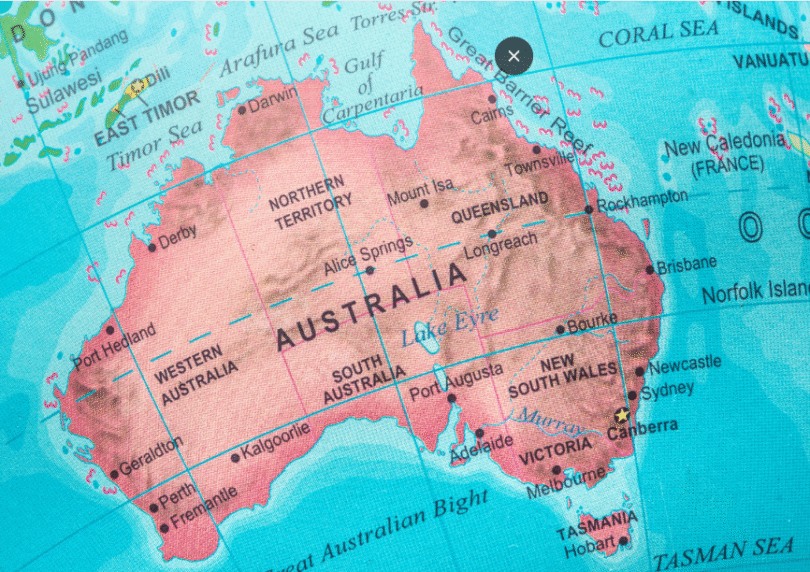The global need for skilled workers keeps growing as economies recover, change, and adjust to new technology and aging populations. Many countries, especially in healthcare, engineering, education, and IT, struggle with worker shortages that slow down productivity and long-term growth. Developed countries are now competing to bring in qualified professionals to fill these gaps and help their economies grow in a steady, lasting way.
Australia is tackling this global challenge with a smart and organized plan called the Regional Work Visa Programs. These programs aim to bring skilled workers to regional areas that need them the most and have untapped economic potential. The program supports the country and local communities by providing clear migration options, better benefits, and faster processing. It helps grow regional economies and reduces pressure on big cities.
The year 2025 is a key moment for regional migration to Australia. New visa options, updated job lists, and closer connections between employers and foreign workers create better and more targeted opportunities for skilled professionals.
Understanding the Regional Work Visa Program
The Regional Work Visa Program is a well-planned effort by the Australian Government to bring skilled workers to specific regional areas. It mainly aims to fix worker shortages outside big cities and support balanced population growth and economic progress across the country. This program is a key part of Australia’s larger skilled migration plan, helping regional communities get the talent they need to succeed.
The program comprises three visa subclasses, each with a specific function and pathway:
- Subclass 491 – Skilled Work Regional (Provisional) Visa:
This visa allows skilled workers who are nominated by a state or territory government or sponsored by an eligible family member to live and work in designated regional areas for up to five years. It provides a clear route to permanent residency. - Subclass 494 – Skilled Employer Sponsored Regional (Provisional) Visa:
This visa enables regional employers to sponsor skilled foreign workers when local talent is unavailable. It also offers a five-year stay and a pathway to permanent residency. - Subclass 191 – Permanent Residence (Skilled Regional) Visa:
This visa is for individuals who have held either the 491 or 494 visa and have met specific income and residency requirements. It grants permanent residency and unrestricted work rights in Australia.
These visas aim to boost regional development by filling important skill gaps and growing the local workforce. Migrants help local economies by working, investing, and joining community life. They support key industries like farming, healthcare, construction, and education.
The Regional Work Visa Program stands out because it focuses on areas outside big cities. Unlike other visas that send workers to crowded urban centers, this program spreads skilled workers across less populated regions. It also offers extra benefits like faster processing, longer work rights, and bonus points on the Skilled Migration Points Test. These features make it a smart and appealing option for skilled migrants.
Benefits of Working in Regional Australia
Living and working in regional Australia gives skilled migrants many personal and professional benefits. The Regional Work Visa Program not only helps fill job gaps in these areas but also rewards migrants who support regional growth with long-term advantages.
Fast-Tracked Path to Permanent Residency
Migrants with provisional regional visas like the Subclass 491 or 494 can move more quickly to permanent residency through the Subclass 191 visa. To qualify, they must live in a regional area, have steady work, and meet a minimum income level for three years. This clear pathway reduces uncertainty and gives long-term stability to migrants and their families.
Additional Skilled Migration Points
Applicants who use regional visa streams can earn extra points on the Skilled Migration Points Test. These bonus points can greatly boost their chances of getting a visa invite, especially in competitive job fields. This makes regional migration a popular choice for skilled workers who want faster access to Australian residency.
Extended Post-Study Work Rights
International students who finish their studies in approved regional areas get extra time to work after graduation. Based on their course and location, they may get up to two more years on top of the usual post-study work period. This gives them more time to gain work experience, apply for permanent residency, or find a job with employer sponsorship.
Less Congestion, Better Quality of Life
Regional Australia offers a quieter lifestyle with less traffic, lower living costs, and cleaner air. Many regional areas also have good healthcare, schools, and housing, making them great for both families and individuals. Migrants often say they feel more welcome and enjoy a better quality of life in regional areas than in big cities.
Opportunities for Family Inclusion and Growth
The Regional Work Visa Program lets eligible migrants include their family members in the visa application. Spouses can work or study, and children can attend local schools and use healthcare services. Families can live together, become part of the community, and work toward permanent residency. This family-friendly approach supports both career and personal goals, making regional migration a strong long-term choice.
Types of Regional Work Visas Available in 2025
In 2025, Australia’s regional migration system offer different visa options for various types of applicants. These visas help spread the workforce and fill skill gaps in areas outside big cities. Each visa has a specific role and provides a clear path to work, live, or become a permanent resident in Australia.
Skilled Work Regional (Provisional) Visa – Subclass 491
The Subclass 491 visa is a points-tested, five-year provisional visa for skilled workers who are nominated by a state or territory government or sponsored by an eligible family member living in a designated regional area.
Features Include:
- Work, live, and study in regional Australia
- Access to a pathway for permanent residency (Subclass 191)
- Priority processing and additional points for regional nomination
- Inclusion of eligible family members
Skilled Employer Sponsored Regional (Provisional) Visa – Subclass 494
The Subclass 494 visa is for skilled workers sponsored by an approved employer in a designated regional area
Features Include:
- Five-year visa with regional work conditions
- Direct employer sponsorship based on local labor needs
- Pathway to permanent residency after three years (via Subclass 191)
- Employers must meet labor market testing and position requirements
Permanent Residence (Skilled Regional) Visa – Subclass 191
The Subclass 191 provides a permanent residence pathway for holders of the 491 and 494 provisional visas.
Eligibility criteria include:
- Minimum three years of residence in regional Australia
- Consistent income at or above the specified threshold
- Full compliance with visa conditions during the provisional period
- Inclusion of eligible family members for permanent status
Temporary Graduate Visas for Regional Graduates
International students graduating from regional institutions may qualify for the Temporary Graduate Visa (Subclass 485) with extended post-study work rights.
Key advantages include:
- Up to two additional years of work rights in regional areas
- Enhanced eligibility for skilled migration pathways
- Opportunities to gain regional work experience and employer sponsorship
Designated Area Migration Agreements (DAMAs)
DAMAs are special labor agreements negotiated between the Australian Government and regional authorities to address specific local workforce needs.
Features include:
- Broader occupation lists tailored to regional demands
- Lower English language, age, or salary thresholds in some cases
- Flexibility for employers in areas facing acute skill shortages
- Multiple pathways to permanent residency for sponsored workers
Seasonal and Working Holiday Visas
These short-term visas support industries with fluctuating labor demands, especially in agriculture, hospitality, and tourism.
- Seasonal Worker Program and Pacific Australia Labour Mobility (PALM) schemes offer structured employment for citizens from eligible partner countries
- Working Holiday Visas (Subclass 417 and 462) allow young travelers to work and travel in regional Australia
- Completing specified work in regional areas may extend visa eligibility or lead to a second or third-year visa
Frequently Asked Questions
Can international students apply for regional visas after graduating?
Yes. International students who graduate from an institution in a regional area may be eligible for extended post-study work rights. They may also apply for a Subclass 491 visa if they meet the points and occupation criteria.
Can I include my family in a regional visa application?
Yes. Most regional visa subclasses allow you to include your spouse or dependent children in your application. Family members also receive access to work, study, and public healthcare benefits in Australia.
What is the Designated Area Migration Agreement (DAMA)?
A DAMA is a formal agreement between the Australian Government and regional areas experiencing skill shortages. It allows employers in those regions to sponsor overseas workers under more flexible terms, including lower skill levels or English requirements for certain occupations.
Can I move to a major city after receiving a regional visa?
No. Provisional regional visas (491 and 494) require you to live and work in a designated regional area for at least three years. Breaching these conditions may affect your eligibility for permanent residency.
Conclusion
Regional Australia provides more than just jobs. It gives people a better lifestyle with lower living costs, friendly communities, and easy access to key services, without the crowds of big cities. It’s a place where individuals and families can grow both in their careers and personal lives.






